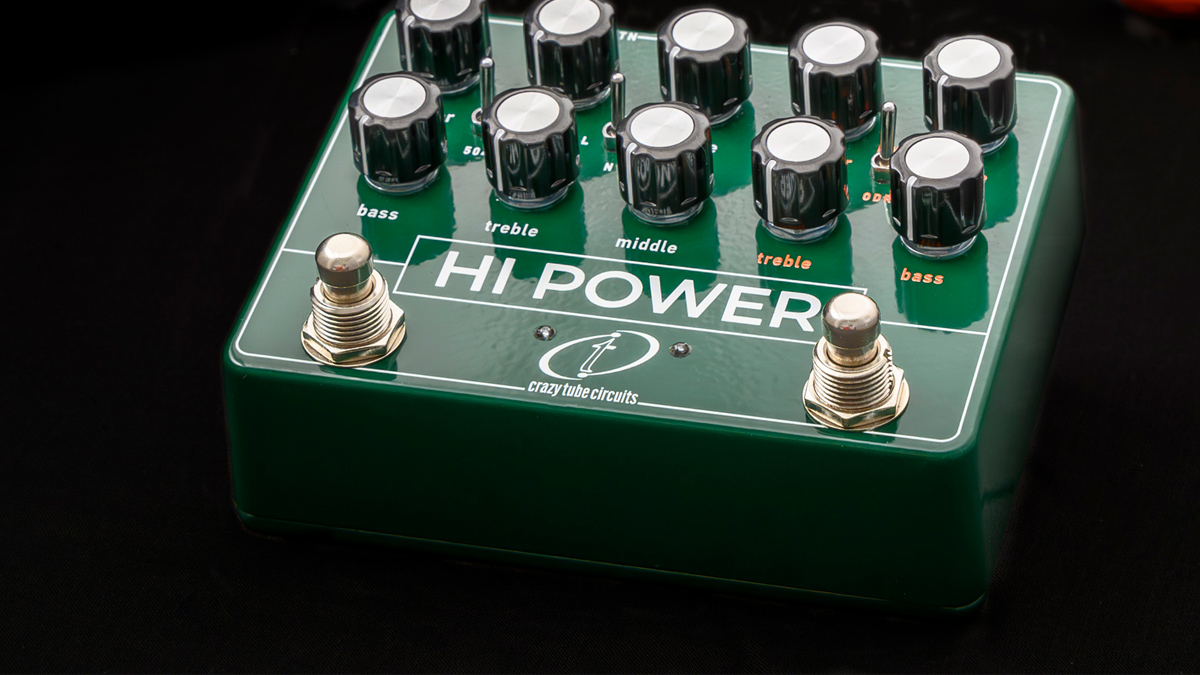Nail David Gilmour’s Wish You Were Here tones with Crazy Tube Circuits’ Hi Power, an amp-in-a-box drive pedal based on a Hiwatt amp and Coloursound Power Boost
CTC’s latest deluxe drive pedal packs a “faithful” yet modernised Power Boost on one side, a Hiwatt amp-style drive on the other, and has an effects loop for more routing options

Crazy Tube Circuits has done it again, and by again we mean it has released a fully featured amp-style overdrive pedal that pairs a classic amp drive voicing with a classic pedal – on this occasion a boost/drive.
Last year it was the Unobtanium, with a Klon-style overdrive sharing space with a pair of Dumble-style drives. The caviar blini and Champagne pairing of the guitar world. This year we have the evocatively titled Hi Power, and it looks pretty sweet, too.
The Hi Power is pedal that is explicitly based on the Coloursound Power Boost and a 1970s Hiwatt tube amp, and spiritually inspired by David Gilmour’s electric guitar tone on Pink Floyd’s 1975 masterpiece Wish You Were Here. Hence a vinyl copy of the album on the Greek guitar effects pedal brand’s marketing materials for the pedal.
The Coloursound Power Boost repro occupies the right-hand side of the pedal, the left is where you will find a circuit replicating the sounds and response of a Hiwatt amp, and there is an effects loop in the middle so that you can integrate other elements from your pedalboard and place them between boost and drive.
The Power Boost is described as a “faithful recreation” of the legendary orange box but not slavish. There is a switchable Overdriver mode which does what you might expect it to do, upping the gain, trimming the headroom.


A by-passable master volume and reverse-log gain control (“for smoother transitions”) has been added to a design that also features a 2-band Baxandall EQ. Incorporated in the circuit, and mentioned here for the cork-sniffers and breadboard curious, are BC184 silicon transistors and an internal voltage booster.
Now to the Hiwatt side, and here, as you would expect, the controls are very much like an amplifier. One cool feature is a toggle switch that allows you to select 100-watt or 50-watt settings – the 103 and 504 respectively. Expect more compression and a little more gain on the 504 50-watt emulation, more headroom and dynamics on the 103.
Want all the hottest music and gear news, reviews, deals, features and more, direct to your inbox? Sign up here.


Elsewhere you have Bass, Middle and Treble, Presence, Volume and Master Volume. Each side of the pedal has its own footswitch, with LEDs to let you know when they’re engaged, so you can operate the boost/overdrive or the amp drives independently of one another.
Both sections of the pedal are true bypass. The Hi Power takes 9v DC from a pedalboard power supply. Jacks are mounted on the top of the unit. The Hi Power is made and designed in Greece and it is available now, priced £235. See Crazy Tube Circuits for more details. And listen to it in action below.
Jonathan Horsley has been writing about guitars and guitar culture since 2005, playing them since 1990, and regularly contributes to MusicRadar, Total Guitar and Guitar World. He uses Jazz III nylon picks, 10s during the week, 9s at the weekend, and shamefully still struggles with rhythm figure one of Van Halen’s Panama.
